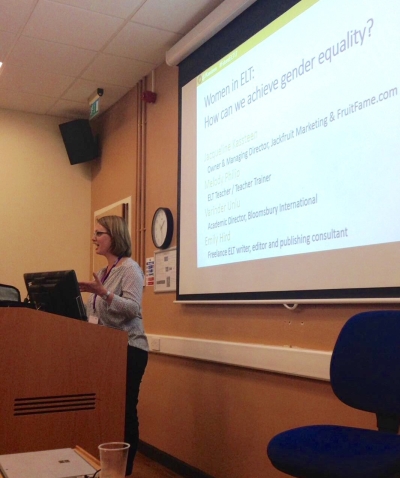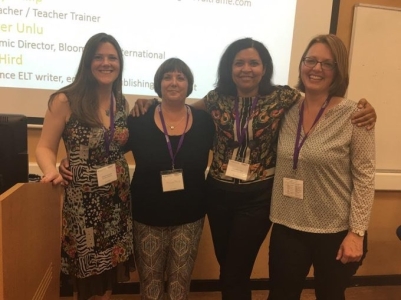You’ve probably seen lots of recent discussion about gender representation in children’s story books and in education materials. You can see some of my previous posts on the topic here and here, with regard to ELT materials specifically.
The hype around recent publications such as Goodnight Stories for Rebel Girls has done a lot to raise awareness of the dearth of female role models in children’s books, and to try to redress the balance. It’s much needed. A recent Guardian article cites some alarming statistics – in a study of the 100 most popular picture books of 2017, lead characters were 50% more likely to be male than female, and, over the course of each book, the characters who spoke were 50% more likely to be male than female. There’s no question about it – female characters must become more visible on the pages of story books, and more empowered when they do appear. Girls need to see positive, inspiring images and be presented with a wide range of role models, on TV, in story books and in educational materials.
But that’s not the whole story, and I fear that branding a book ‘for girls’ rather misses the point.
Because this not just for the sake of girls. Boys need to see these stories too. Is it not equally important for boys to be brought up respecting and admiring the achievements of pioneering women?
We need to think about the way boys and men are represented, as well. Do the materials we expose children to challenge or reinforce traditional norms where men are expected to be dominant, aggressive, strong and unemotional?
Let’s take a minute to think about alternative characteristics we could be portraying. I absolutely love this though-provoking poster by Elise Gravel.

(Incidentally, if you like that poster, there’s companion one about girls, and also this about women in STEM . Best of all, Elise Gravel is happy for these to be printed out for use in class.)
How often do the materials you see include sensitive, dreamy or gentle boys? Or even boys looking after younger siblings? What about boys who love craft activities, dancing or doing gymnastics? As the tweet below from Let Toys be Toys says, there’s no ‘one way’ to be a boy, so we need materials that celebrate this richness of experience. (And I don’t know about you, but that picture of The Hulk pushing around Baby Hulk in a buggy has made my day.)
In many ways, I suspect that this discussion is more controversial than attempts to include strong female characters would be. Believe me when I say I’m very conscious of the tightrope which ELT editors and materials writers walk, keeping a product commercially viable for a range of potentially very conservative international markets while also trying to move things forward. Of course there will be lots of compromises, but we can definitely take some steps in the right direction.
The picture book Guess How Much I Love You – which is criticised in the Guardian article I’ve linked to above for not including any female characters – deserves praise for its rare depiction of a highly affectionate relationship between a single dad and his son, who compete in their claims of love for one another. I can’t believe this would be particularly controversial in many cultures, but it definitely chips away at some unhelpful macho stereotypes.
We need to move towards a situation where presenting complex, multi-faceted depictions of masculinity is the norm. I would love to hear of positive examples you’ve seen of this in ELT materials, and for us to give a virtual pat on the back to the people who’ve made it happen, and encouragement to those who want to.




